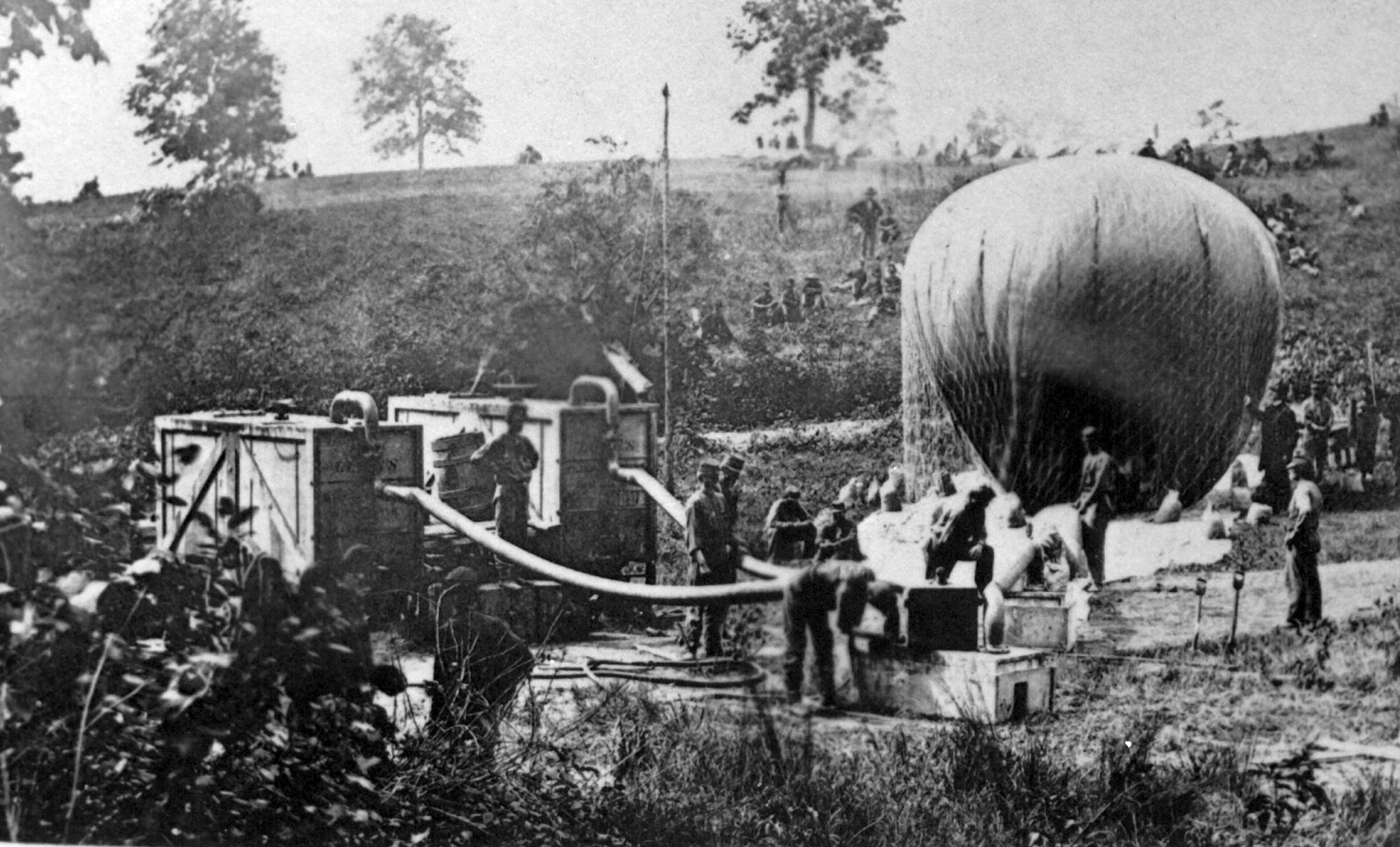Intrepid (balloon) on:
[Wikipedia]
[Google]
[Amazon]
The ''Intrepid'' was a hydrogen gas balloon or aerostat built for use by the
 Individual balloons (aircraft)
Virginia in the American Civil War
Individual balloons (aircraft)
Virginia in the American Civil War
Union Army Balloon Corps
The Union Army Balloon Corps was a branch of the Union Army during the American Civil War, established by presidential appointee Thaddeus S. C. Lowe. It was organized as a civilian operation, which employed a group of prominent American aeronaut ...
for aerial reconnaissance purposes during the American Civil War
The American Civil War (April 12, 1861 – May 26, 1865; also known by other names) was a civil war in the United States. It was fought between the Union ("the North") and the Confederacy ("the South"), the latter formed by states ...
. It was one of seven balloons constructed for the Balloon Corps and was one of the four larger balloons designed to make ascensions to higher elevations with a larger lift capacity for telegraph equipment and an operator. It was the balloon of choice for Chief Aeronaut Thaddeus Lowe
Thaddeus Sobieski Constantine Lowe (August 20, 1832 – January 16, 1913), also known as Professor T. S. C. Lowe, was an American Civil War aeronaut, scientist and inventor, mostly self-educated in the fields of chemistry, meteorology, and a ...
overlooking the Battle of Fair Oaks
The Battle of Seven Pines, also known as the Battle of Fair Oaks or Fair Oaks Station, took place on May 31 and June 1, 1862, in Henrico County, Virginia, nearby Sandston, as part of the Peninsula Campaign of the American Civil War. It was th ...
.
The fateful flight over the Battle of Fair Oaks was instrumental in saving the fragmented army of Union Army General Samuel P. Heintzelman
Samuel Peter Heintzelman (September 30, 1805 – May 1, 1880) was a United States Army general. He served in the Seminole War, the Mexican–American War, the Yuma War and the Cortina Troubles. During the American Civil War he was a prominent figu ...
from what would have been a sure defeat at the hands of the Confederates. The ''Intrepid'' undergoing lengthy inflation was quickly hooked up to the spout of the smaller ''Constitution'' by means of a de-bottomed camp kettle by which the gas was transferred in shorter time to make the ascent.
In 1983, the U.S. Postal Service honored the ''Intrepid'' with a postage stamp.
Design
The ''Intrepid'' had a capacity of 32,000 cubic feet of lifting gas (Hydrogen
Hydrogen is the chemical element with the symbol H and atomic number 1. Hydrogen is the lightest element. At standard conditions hydrogen is a gas of diatomic molecules having the formula . It is colorless, odorless, tasteless, non-toxic ...
). It was supplied by hydrogen-generating wagons. These wagons, constructed by Lowe, reacted sulfuric acid with iron filings to produce hydrogen gas.{{Cite web, date=2017-06-26, title=Civil War Ballooning, url=https://www.battlefields.org/learn/articles/civil-war-ballooning, access-date=2021-05-02, website=American Battlefield Trust, language=en-US
References
See also
* History of military ballooning *Union Army Balloon Corps
The Union Army Balloon Corps was a branch of the Union Army during the American Civil War, established by presidential appointee Thaddeus S. C. Lowe. It was organized as a civilian operation, which employed a group of prominent American aeronaut ...
* Observation balloon
*Moored balloon
A tethered, moored or captive balloon is a balloon that is restrained by one or more tethers attached to the ground and so it cannot float freely. The base of the tether is wound around the drum of a winch, which may be fixed or mounted on a vehic ...
----
----